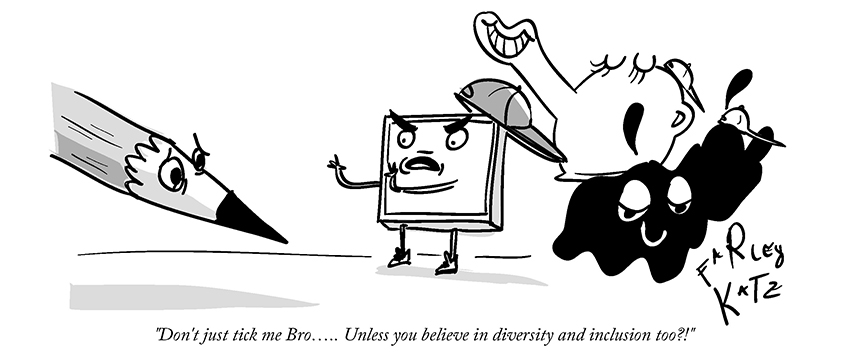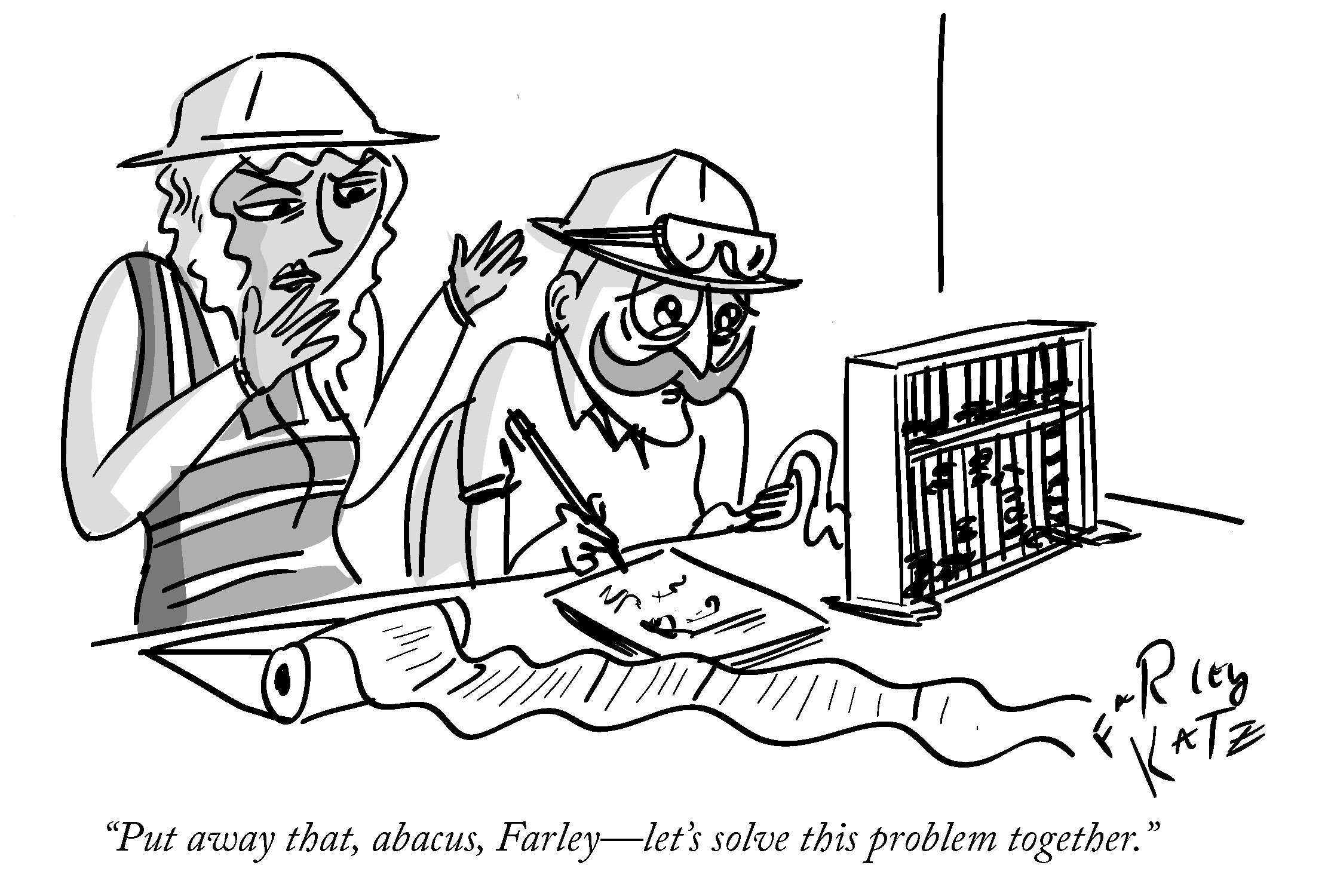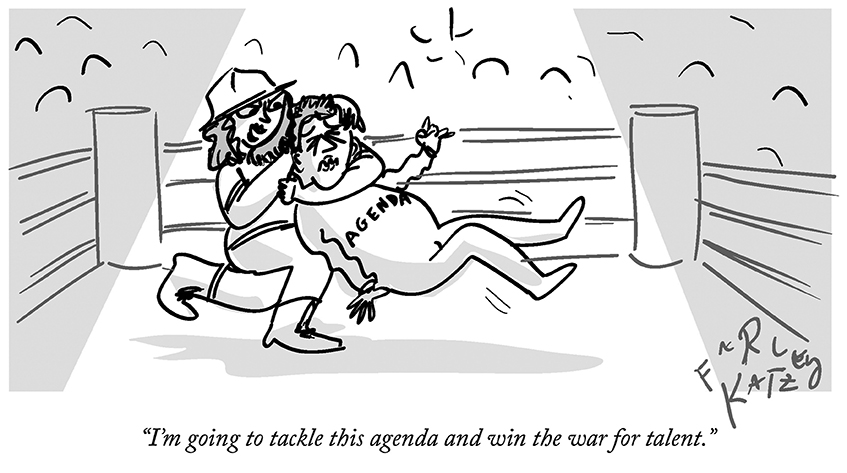Most property professionals would agree that a proactive approach to diversity and inclusion can benefit their companies. But what are they doing about it? EG asked Amanda Clack, the co-author of a new book on the subject, to explain how best to make real progress.
Research shows that high‑performing organisations focus on diversity and inclusion. In any workplace, it is important to both understand and recognise the benefits that having a D&I workforce provides. It is integral to developing people within an organisation, serving clients as best we can, and playing an important leadership role in communities.
Managing Diversity and Inclusion in the Real Estate Sector, a book written by myself and RICS acting managing director for Europe, Judith Gabler, places D&I at the centre of successful real estate and construction organisations.
It provides guidance to and (most importantly) actions for professionals in the sector who want to make D&I part of the culture of their organisation.
The book has been written to bring the sector up to speed with what D&I is all about and how a D&I strategy can be implemented to secure future success.
The last chapter, summarised below, is all about what leaders in the sector can do to be the change that they want to create. Surprisingly for a book, it is about actions, not words.

Real estate and construction have not traditionally been diverse or inclusive in terms of workforce. While much has started to change in recent years, it is interesting to note that the biggest concern employers have, according to RICS research, is tackling the war for talent.
For you as a service provider, the main concern is, quite understandably, having the best people in your business to service your clients’ needs. Getting those people is difficult when there is such a strong demand for top talent – not just in the property sector, but also in science, technology, engineering, maths and other areas.
As the chief executive, you set the vision for the organisation. Your role as a leader in tackling D&I as a mechanism to attract, develop and retain the best people – as well as setting the cultural tone for the organisation with your clients and suppliers – is critical.
Your employees are your greatest asset. They need to be treated fairly, whoever they are and wherever they are in the world. It is important to develop a single vision for the organisation that can be adapted depending on the global context.
D&I is not necessarily a subject that will sit well in all parts of the business and with all people. There are certainly restrictions in terms of the extent to which the D&I protected characteristics can be discussed or implemented across the globe. It is important to recognise that a global vision has to take into account national practicalities, since in some countries it is illegal even to discuss or disclose these characteristics.
The role of the chief executive is to be able to think ahead and plan for the future, taking on board political, social, economic and technological changes relating to market opportunities. Setting the vision for what the organisation needs to do on D&I is important for many business reasons – financial performance, legal considerations, market impact and the people dimension.
What is important is people. Investing in your employees – to attract, develop and retain them – is essentially about helping them to become better employees. Creating the right culture, environment and workplace that enables them to bring themselves to work every day and to feel comfortable in the workplace will engender greater loyalty and a work ethic, as employees will want to give their best.
There is a greater recognition now among organisations in our sector that D&I is critical for the future success of the organisation. This is why 177 companies (of all sizes) have now signed up to the RICS Inclusive Employer Quality Mark, representing more than 300,000 employees.
A commitment to D&I starts with you, the chief executive, at the top of the organisation, and it is certainly something that those you are taking on as juniors (apprentices or graduates) will want to see. A lot of leadership is required in guiding the middle layer of the organisation – middle and line managers, who need to be supported in embracing, adopting and implementing the change. Remember that sometimes it can be the smallest things that make the biggest difference.
Wherever you sit in your organisation’s hierarchy, it is important that, as a leader, you are inspiring and empowering. However, to be successful with the D&I agenda, you also need to be authentic, empathetic and compassionate. Show some vulnerability, and listen well to those around you so that you embrace different voices and perspectives. People need to be heard and to believe that they belong. Do not shoot down, but lift up – and show that the organisation cares.

Writing the vision
The vision essentially documents a statement of what you envisage your business will be at some point in the future, based on your organisational goals and aspirations. Having a clear vision will give your business a clear focus, as well as preventing you from heading in the wrong direction.
There are strong, rapidly changing market dynamics at play – which make the setting of the vision even more important.
A good vision statement should be short, simple, clear, and specific to your organisation, but it should also have within it a robust level of ambition. It is important that you, as a leader, can convincingly communicate the vision.
Companies in the top quartile for racial and ethnic diversity are 35% more likely to have financial returns above their respective national industry medians.
Remember that D&I is the solution. It is a matter of organisational performance, not an issue or problem to solve.
The culture of the organisation forms its DNA. The organisation’s approach to D&I is an important part of this culture. This starts with you, as the chief executive.
Tackling the agenda
Tackling the agenda head-on is key. It is time to stop focusing on policy, and instead to focus on closing the implementation gap – by taking action.
What you and your organisation need to do in relation to tackling this agenda and winning the war for talent can be summarised in the new four principles implemented as part of the IEQM – leadership, recruitment, culture and development (see panels).
Having vision and showing leadership as the CEO will not be new. But to truly make a difference when it comes to the D&I agenda, your role is critical. People within and outside the organisation will look to you to provide the aspiration and show the way.
This is such an important agenda in this current cycle of talent attraction and retention. Have the courage to move the dial for your organisation by increasing the emphasis and focus. This will leave a legacy for future generations.
Your role is to set the dial for change on D&I for your organisation, recognising what stage of the journey you are on – and to be the change that you want to create.
How to walk the talk
- Attend, speak at and support networking events.
- Make a personal pledge that you will only speak at or attend events that are diverse and inclusive.
- Call out behaviours that are not inclusive of the vision you are setting.
- Recognise and reward the right behaviours.
- Ensure D&I is part of the agenda for every board meeting, to show that you are serious about it.
- Put in place key training and leadership development for all the leaders in your business on key D&I issues, such as unconscious bias, interviewing and performance management – and attend these sessions yourself.
- Listen to and engage with your employees at all levels, as well as your clients.
- Find a reverse-mentor and engage with the next generation.
- Set up junior or shadow boards to get the next generation of leaders more engaged with the current ones.
- Communicate what you and the organisation are doing.
Leadership
- The D&I agenda and vision needs to start at the most senior level within the organisation in order to be successful.
- Demonstrate your personal commitment to this agenda. Take personal ownership, be visible and accountable for the agenda.
- Consider your own attitude and that of your senior management team towards how D&I business practices can be embedded into the organisational culture, and develop action plans.
- Get the full commitment of the leaders in your business that they too not only support this, but will endorse it with their teams and correct non‑conformance.
- Put in place training for your leadership team so that they understand and embrace the D&I agenda.
- Allocate time to develop and implement the strategy, to give it focus and to ensure effective implementation.
- Ensure D&I is embedded in all business decisions and is part of the overall business strategy.
- Engage key stakeholders and change ambassadors.
- Review governance and management by putting in place new governance and management responsibilities or adjusting existing ones.
- Monitor the changes through a D&I impact assessment and understand the reasons for what is being presented.
- Put in place an action plan to make the changes the organisation requires, with clear accountability and responsibility.
- Size matters, and will influence what you need to be considering – the size, purpose or sector in which you operate and whether you are an international firm or an SME (or anything in between) will affect what you need to be doing and how you roll out D&I in your organisation.
- Do not go it alone – always involve your HR and legal teams.
- Be open-minded about national and regional cultures and the “why” by considering hiring people that are different and from varied backgrounds to challenge the thinking and foster open-mindedness and tolerance.
Recruitment
- Get into schools and support schools’ initiatives to encourage young people to think about a career in the profession.
- Educate the educators – persuade schoolteachers and parents, who help influence early career decisions, that a career in property is a great opportunity.
- Support an internship and apprentice programme to encourage people from a wide range of different backgrounds to enter the organisation.
- Extend the graduate programme to people with cognate and non-cognate degrees.
- Seek to engage and attract new people to the organisation from under-represented groups.
- Starting salary and parity across male and female recruits is a relevant consideration.
- Recruit, where possible, on the basis of a 50:50 gender balance, particularly at graduate level.
Development
- Provide the right training and promotion policies that offer equal access to career progression, enabling all staff to develop and succeed.
- Training managers about unconscious bias to reduce bias in appraisals and promotion choices is essential.
- Considering D&I goals when implementing fast-track leadership programmes should be adopted.
- Consider setting targets, and monitor progress on key metrics.
- Put in place opportunities for promoting great role models across the organisation and beyond. Enter people for awards, and promote a D&I face in the public profile of your organisation.
- Establish employee networks where people can informally come together to support, coach or mentor each other.
- Consider a mentoring, and reverse-mentoring, programme to help support and develop talent within the organisation.
- Gain employee feedback, as this is essential – the consistent use of staff surveys or forming employee groups to gain employee feedback are seen as effective mechanisms in common practice.
- Building D&I awareness and training for all staff provides them with an understanding of the skills and the language needed to help change the culture of their organisation and make it more inclusive.
- Work with other key influencers and stakeholders on the D&I agenda, including international organisations, real estate industry bodies and branch organisations, D&I organisations and education providers, as all have a role to play and information to share.
Culture
- Create an environment that is open, transparent and inclusive for all, so that people feel comfortable to be who they are and give their best.
- Consider the implications of the multigenerational workplace by looking beyond people’s age or years of service, and look instead at the overall contribution.
- People with disabilities should be provided with clear information, in a format they can understand, about what support or changes to the workplace are available to them.
- Consider how buildings, services and the workplace environment can be adapted so that they can access and use them safely and freely alongside their colleagues.
- Think about what technology and gadgets can be provided to help support people to be more independent and to work more effectively.
- Recognise the importance and key attributes of creating a family-friendly workplace.
- Allow flexible working – this is a decisive element for organisations to increase their competitive edge, recruit high-potential individuals, retain qualified staff and maintain high engagement levels.
- Give permission to call out bad behaviours – and correct them immediately.
- Encourage and reward behaviours and attitudes linked to D&I, such as tolerance, empathy, open-mindedness, agility and flexibility, curiosity and looking beyond the label.
- Develop HR policies that are family-friendly.
- Encourage the women in your organisation to be the best that they can be and to aspire to senior positions – not to the detriment of their male colleagues, but alongside them.
Your 10-point personal action plan
1. Set a vision and strategy for the organisation on D&I, publish it, and talk about it with your employees – set aside resources to support the agenda.
2. Be an authentic leader – do not say anything you do not believe in.
3. Set the language and tone by calling out openly bad behaviours, and neutralise language to be acceptable for everyone across the organisation – for example, stop calling a mixed group “guys”.
4. Make a public pledge to refuse to speak on panels that are not diverse.
5. Ensure all your recruitment shortlists include more than one female, and are diverse wherever possible.
6. Operate a flexible working policy in your organisation, and practise it yourself, as well as rewarding output, not presenteeism. Discourage organisational flexism.
7. Bring in shared parental leave.
8. Set up and support networks in the organisation, or support your people in attending these outside the organisation.
9. Work with schools and other professions.
10. Walk the talk – and speak about D&I in your organisation openly. Sometimes it is the small things you do or say that will have the biggest impact.
You can buy the book with a special MIPIM web discount code (MDI230) that can be used on the www.routledge.com website, giving a 25% discount until 1 July.
Contact Pete Williams, Head of Corporate Sales at Routledge. e-mail: peter.williams@tandf.co.uk or call 07990 007392 for details on corporate rates for volume purchasing and customised inserts















